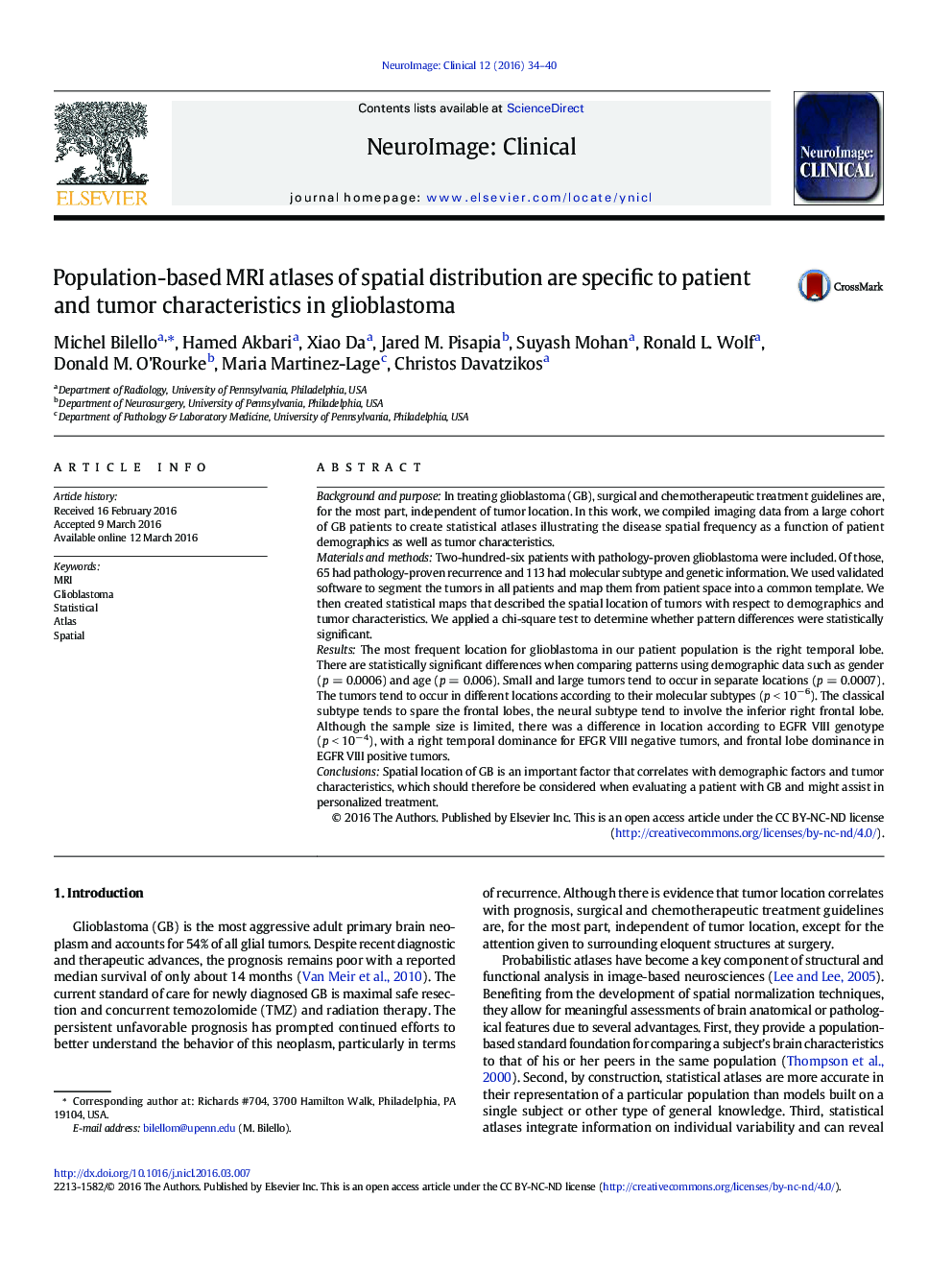| کد مقاله | کد نشریه | سال انتشار | مقاله انگلیسی | نسخه تمام متن |
|---|---|---|---|---|
| 3074787 | 1580955 | 2016 | 7 صفحه PDF | دانلود رایگان |

• Atlases of spatial distribution of glioblastoma are created.
• Atlases are specific to patient characteristics such as age and gender.
• Atlases are specific to tumor characteristics such as size and molecule subtype.
• Atlases are specific to tumor genetics.
• Spatial location should be considered when evaluating a patient with glioblastoma.
Background and purposeIn treating glioblastoma (GB), surgical and chemotherapeutic treatment guidelines are, for the most part, independent of tumor location. In this work, we compiled imaging data from a large cohort of GB patients to create statistical atlases illustrating the disease spatial frequency as a function of patient demographics as well as tumor characteristics.Materials and methodsTwo-hundred-six patients with pathology-proven glioblastoma were included. Of those, 65 had pathology-proven recurrence and 113 had molecular subtype and genetic information. We used validated software to segment the tumors in all patients and map them from patient space into a common template. We then created statistical maps that described the spatial location of tumors with respect to demographics and tumor characteristics. We applied a chi-square test to determine whether pattern differences were statistically significant.ResultsThe most frequent location for glioblastoma in our patient population is the right temporal lobe. There are statistically significant differences when comparing patterns using demographic data such as gender (p = 0.0006) and age (p = 0.006). Small and large tumors tend to occur in separate locations (p = 0.0007). The tumors tend to occur in different locations according to their molecular subtypes (p < 10− 6). The classical subtype tends to spare the frontal lobes, the neural subtype tend to involve the inferior right frontal lobe. Although the sample size is limited, there was a difference in location according to EGFR VIII genotype (p < 10− 4), with a right temporal dominance for EFGR VIII negative tumors, and frontal lobe dominance in EGFR VIII positive tumors.ConclusionsSpatial location of GB is an important factor that correlates with demographic factors and tumor characteristics, which should therefore be considered when evaluating a patient with GB and might assist in personalized treatment.
Journal: NeuroImage: Clinical - Volume 12, 2016, Pages 34–40